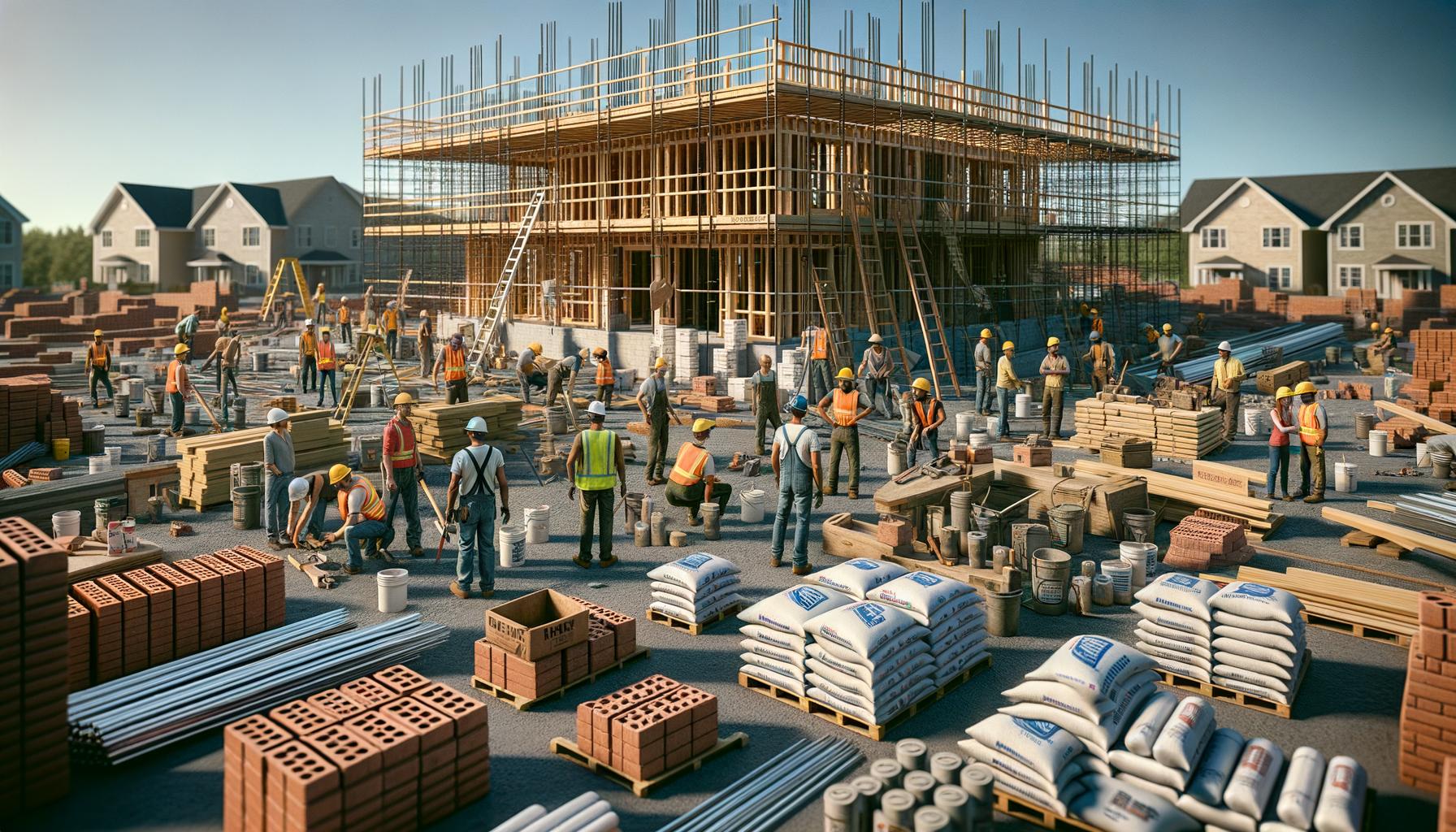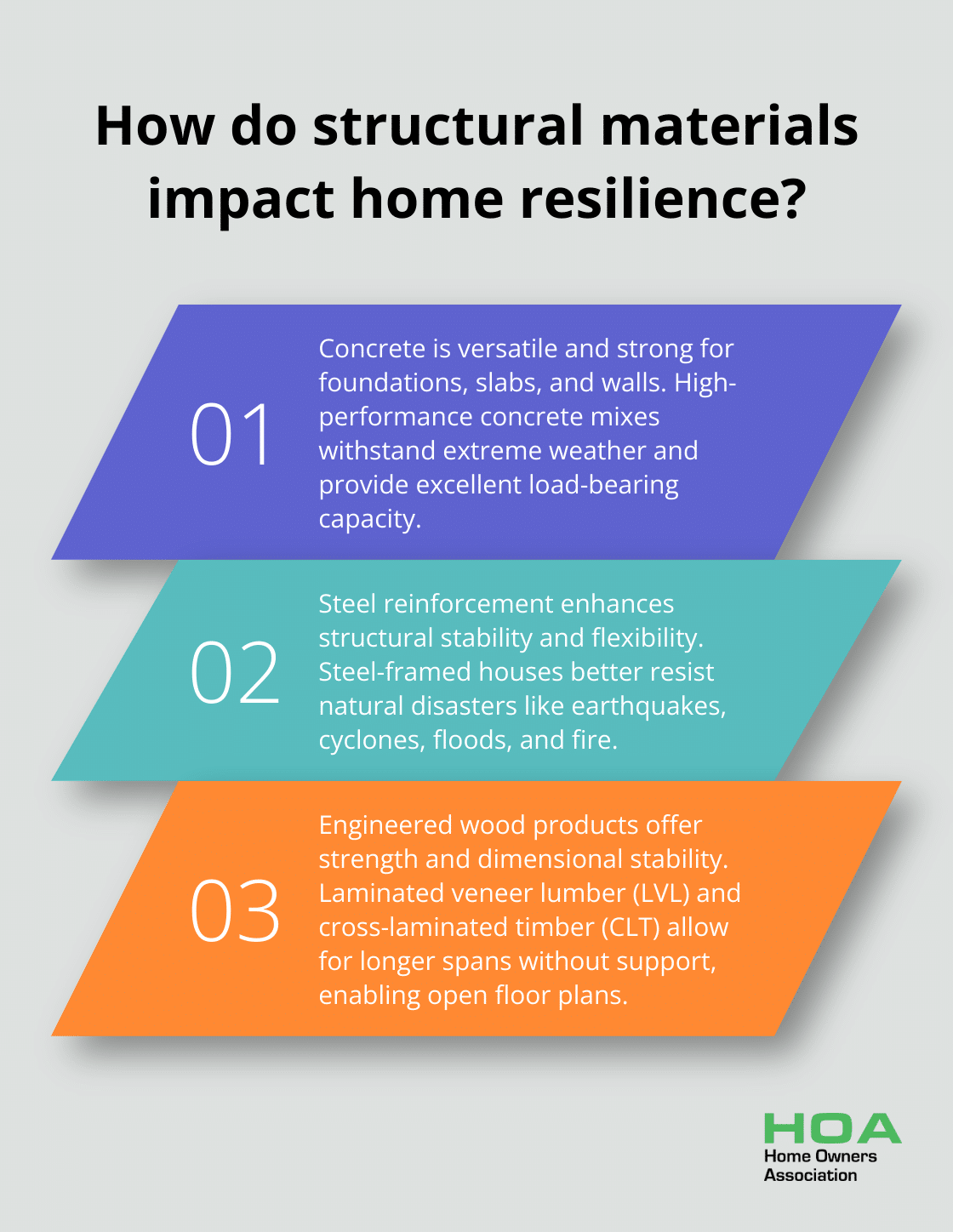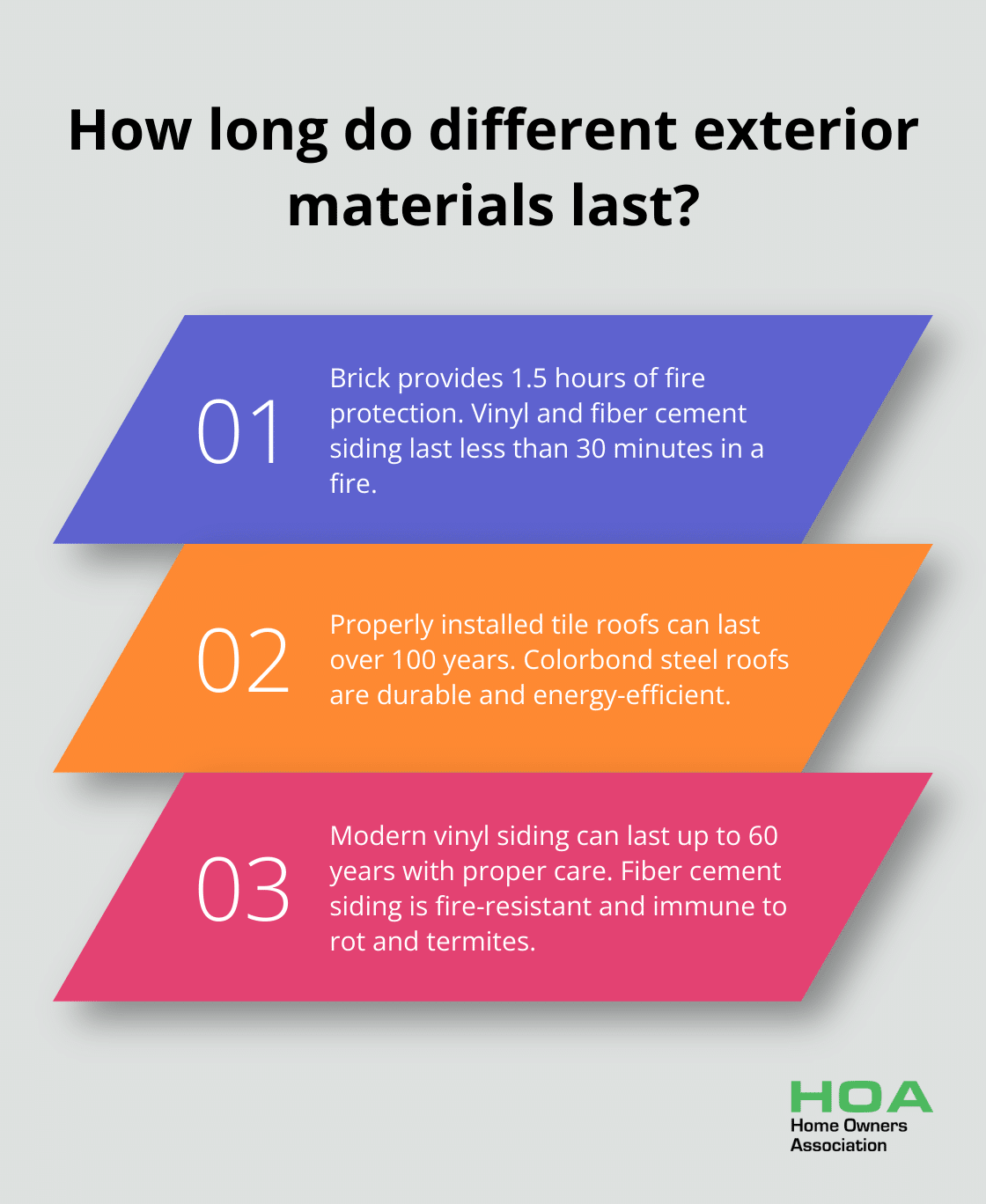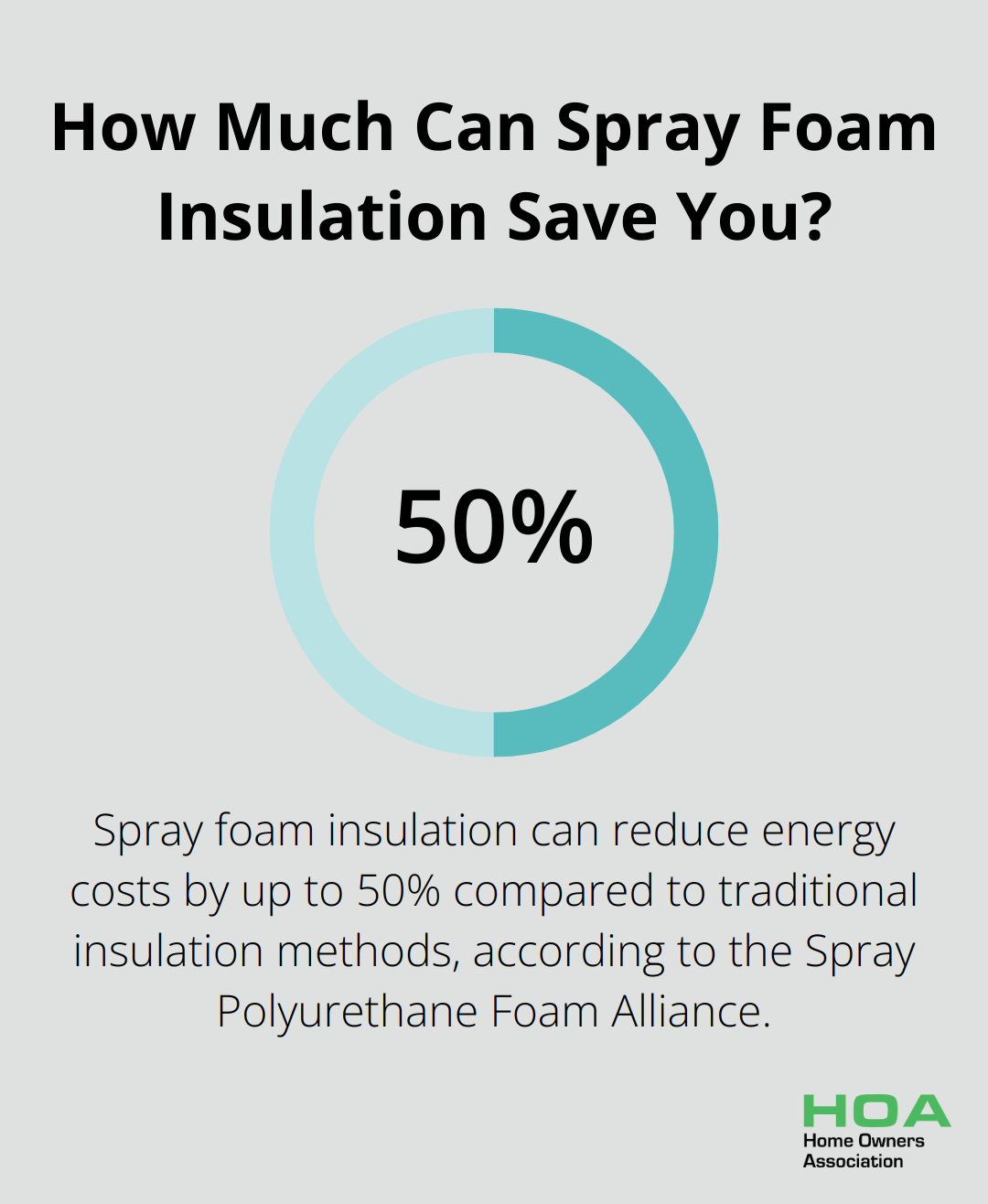
At Home Owners Association, we understand that choosing the right materials for building a house is a critical decision for any homeowner. The foundation, exterior, and interior of your dream home all depend on selecting high-quality, durable materials.
In this guide, we’ll explore the essential building materials that can transform your vision into reality, ensuring both structural integrity and aesthetic appeal.
Building a Strong Foundation
At the heart of every dream home lies a robust foundation. The structural integrity of your house depends on the quality and type of materials used in its core construction. Let’s explore the key components that form the backbone of a sturdy home.
The Power of Concrete
Concrete stands as the unsung hero of modern construction. Its versatility and strength make it indispensable for foundations, slabs, and walls. High-performance concrete mixes can withstand extreme weather conditions and provide excellent load-bearing capacity. Recent research published in Coatings in 2023 assessed the use of graphene oxide in protective coatings, aiming to establish the optimal formulation for concrete surface treatments.
Steel: The Skeleton of Your Home
Steel reinforcement and framing play a crucial role in enhancing the structural stability of your house. Reinforced concrete, which combines concrete and steel, offers superior tensile strength and flexibility. Steel-framed houses can better withstand natural disasters like earthquakes and cyclones. The rigid nature of steel frames offers resistance against floods, cyclones, earthquakes, and fire, making it a critical consideration for many regions in Australia.
Engineered Wood: Innovation Meets Tradition
Engineered wood products have revolutionized home construction. These materials, such as laminated veneer lumber (LVL) and cross-laminated timber (CLT), offer the warmth and aesthetics of wood with enhanced strength and dimensional stability. Forest and Wood Products Australia states that engineered wood can span longer distances without support, allowing for more open floor plans and creative architectural designs.
Choosing the Right Mix
When you select structural materials, it’s essential to consider your local climate, soil conditions, and building codes. Expert advice on material selection ensures compliance with Australian Standards while maximizing durability and cost-effectiveness.

The foundation sets the tone for your entire home. Investment in high-quality structural materials may seem costly upfront, but it pays dividends in long-term stability and reduced maintenance costs. Consultation with certified builders and engineers determines the best combination of materials for your specific project needs.
As we move forward, let’s explore the exterior materials that not only protect your home but also enhance its curb appeal and overall value.
Crafting Your Home’s Exterior
The exterior of your dream home combines durability and aesthetics. The right choice of materials significantly impacts both the longevity and visual appeal of a house. Let’s explore some of the most effective options for your home’s exterior.
Brick and Stone: Timeless Elegance
Brick and stone remain popular choices for exterior walls due to their durability and classic appeal. The Brick Industry Association reports that brick provides 1.5 hours of protection before a fire breaches your home, whereas vinyl and fiber cement siding won’t withstand 30 minutes. In Australia, brick veneer construction is common, offering excellent insulation properties and fire resistance.

Natural stone provides unparalleled beauty and uniqueness (albeit at a higher cost). Sandstone and limestone are particularly popular in Australian architecture. These materials withstand harsh weather conditions and age gracefully, developing character over time.
Roofing: Protection from Above
Your roof serves as your home’s first line of defense against the elements. In Australia, terracotta and concrete tiles are widely used due to their longevity and ability to withstand extreme weather. The Tile Roofing Institute states that properly installed tile roofs can last over 100 years.
Metal roofing, particularly Colorbond steel, has gained popularity for its durability and energy efficiency. The thermal properties of COLORBOND® roofs in Australia reduce reliance on artificial cooling and heating systems.
For those seeking a more traditional look, asphalt shingles offer affordability and ease of installation. However, they may have a shorter lifespan in Australia’s harsh climate compared to tiles or metal.
Siding: The Face of Your Home
Siding plays a key role in both protecting and beautifying your home’s exterior. Vinyl siding is a cost-effective option that requires little maintenance. The Vinyl Siding Institute reports that modern vinyl siding can last up to 60 years with proper care.
Fiber cement siding, such as James Hardie products, has become increasingly popular in Australia. It offers the look of wood without the susceptibility to rot or termites. This material is also fire-resistant (a crucial factor in bushfire-prone areas).
For a natural look, wood siding remains a classic choice. However, it requires regular maintenance to prevent issues like rot and insect infestation. Cedar and cypress are popular choices due to their natural resistance to decay.
When selecting exterior materials, consider factors such as local climate, maintenance requirements, and neighborhood aesthetics. Home Owners Association members can access exclusive discounts on many of these materials, potentially saving thousands on their home’s exterior.
The exterior of your home creates a protective shell that will stand the test of time. High-quality materials and experienced professionals ensure that your home’s exterior will remain beautiful and functional for decades to come.
Now that we’ve covered the exterior, let’s move on to the interior materials that will transform your house into a comfortable and stylish home.
Creating a Comfortable Interior
Flooring That Fits Your Lifestyle
The selection of the right flooring balances durability, maintenance, and personal taste. Hardwood floors offer timeless appeal and longevity. Wood flooring can last well beyond 100 years in service, although hardwood trees typically take about 40 to 60 years to mature, depending on the species.

Tile excels in moisture-prone areas like bathrooms and kitchens. Porcelain tiles stand out for their water resistance and durability. The Tile Council of North America reports that porcelain tiles have a water absorption rate of less than 0.5% (making them highly resistant to stains and water damage).
Carpet provides warmth and comfort, especially in bedrooms and living areas. Modern carpets feature stain-resistant treatments and improved durability. The Carpet and Rug Institute indicates that today’s carpets can last up to 10-15 years with proper care.
Walls and Ceilings: The Canvas of Your Home
Drywall serves as the standard for interior walls and ceilings in most Australian homes. It offers cost-effectiveness, fire resistance, and easy repair. Plaster provides a smooth, seamless finish for a more traditional look. The Gypsum Association notes that properly installed drywall can last for decades without replacement.
Low-VOC paints gain popularity due to their minimal environmental impact and reduced odor. These paints release fewer volatile organic compounds, which contributes to better indoor air quality.
Insulation: The Invisible Comfort Factor
Proper insulation maintains a comfortable temperature and reduces energy costs. Your Home guide recommends considering both up and down R values when installing roof, ceiling, and floor insulation. Total R values for walls are expressed as a single figure.
Fiberglass batts remain a popular and cost-effective insulation option. Spray foam insulation, while more expensive, offers superior air sealing properties. The Spray Polyurethane Foam Alliance reports that spray foam can reduce energy costs by up to 50% compared to traditional insulation methods.
Home Owners Association members have reported significant savings on their energy bills after insulation upgrades. Some members have seen reductions of up to 30% in their heating and cooling costs following professional insulation installations.
The careful selection of these interior materials creates a comfortable, efficient, and stylish home that will serve well for years to come. The choices made now will impact daily life and long-term satisfaction with your dream home.
Final Thoughts
Building your dream home requires careful selection of materials at every stage. From the foundation to the roof, each component plays a vital role in creating a sturdy, comfortable, and aesthetically pleasing living space. The structural integrity of your home depends on concrete, steel, and engineered wood products, while the exterior showcases the durability of brick, stone, and various roofing and siding options.

Your choice of flooring, wall materials, and insulation significantly impacts your daily comfort and energy efficiency. Superior materials often translate to reduced maintenance costs, improved energy efficiency, and enhanced resale value (they also contribute to a healthier living environment). When you choose materials for building a house, consider factors such as local climate, building codes, maintenance requirements, and long-term durability.
For homeowners in Melbourne who want to navigate the complex world of building materials and home construction, the Home Owners Association offers support. With access to trade pricing, expert advice, and resources, members can make informed decisions and achieve savings on their home projects. You can ensure that your dream home is built with the best materials available, tailored to Melbourne’s unique environment and market conditions.





